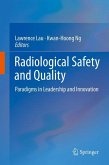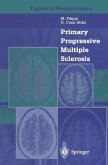This book explains MRI pulse sequences in a simple, easy-to-understand way. As MRI use grows rapidly due to its detailed imaging and faster technology, it's important for radiology trainees to learn core pulse sequences early. The authors clearly describe the physics behind commonly used clinical MRI sequences, like spin-echo, gradient-echo, and MR angiography, etc., while simplifying complex concepts and including clinical examples. The book also addresses challenges in MRI education and standardization, offering a comprehensive guide for radiologists, residents, physicists, researchers, and students.
Dieser Download kann aus rechtlichen Gründen nur mit Rechnungsadresse in A, B, BG, CY, CZ, D, DK, EW, E, FIN, F, GR, HR, H, IRL, I, LT, L, LR, M, NL, PL, P, R, S, SLO, SK ausgeliefert werden.









